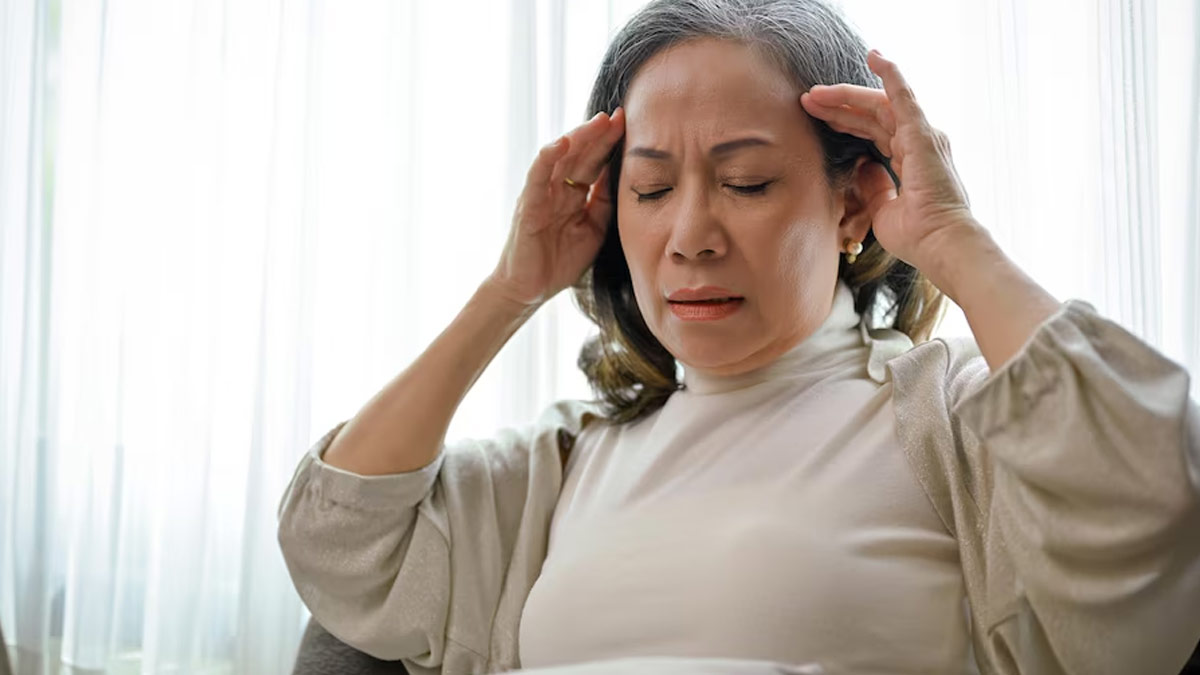
Stroke is among the leading causes of death worldwide. It occurs when a blood vessel that carries oxygenated and nutrient-rich blood to the brain is either blocked or bursts. Also known as a brain attack, a stroke can affect different parts of the body and impair various functions, including breathing, heartbeat, and body temperature. Moreover, symptoms can be wide-ranging, with many appearing on the face itself.
Table of Content:-
In an interaction with the OnlyMyHealth team, Dr Sinjan Ghosh, Consultant Neurologist, Fortis Hospital, Anandapur, not only explains the factors that can trigger or increase the risk of a stroke but also lists symptoms that can show on the face.
What Causes Stroke?

According to Dr Ghosh, the causes of the stroke may vary depending on the type of stroke experienced. Two of the prevailing types of strokes include ischemic stroke and hemorrhagic stroke.
Ischemic stroke: It is caused by atherosclerosis, which is the hardening of the blood vessels, and clotting disorders, wherein the blood vessels carrying blood and oxygen to the brain are either blocked, narrowed, or clotted.
Hemorrhagic stroke: It is caused by bleeding in the brain due to the leaking or bursting of a blood vessel.
Other factors that may increase a person’s risk of stroke include:
- Lifestyle factors like irregular physical activities, eating junk and unhealthy foods, obesity, consumption of alcohol, smoking, and drug intake.
- Health conditions like high blood pressure, diabetes, cholesterol, cardiovascular diseases, and sleep disorders like obstructive sleep apnoea.
- Certain medications, like birth control pills and hormone therapies,.
- Other general factors could be age, sex, genetics, and family history.
Common Symptoms Of Stroke

According to the American Stroke Association (ASA), the brain controls both motor and sensory functions throughout the body. However, depending on the location of the stroke, the effects and symptoms may vary.
Stroke in the left brain
ASA suggests that if the stroke occurs on the left side of the brain, the right side of the body will be affected, which can lead to symptoms such as:
- Paralysis on the right side of the body
- Sensory changes on the right side of the body
- Speech/language problems
- Abstract thinking
- Problems with thinking and memory
- Slow, cautious behavioural style
Stroke in the right brain
Similarly, if the stroke occurs on the right side of the brain, the left side of the body will be affected, causing symptoms such as:
- Paralysis on the left side of the body
- Sensory changes on the left side of the body
- Vision problems
- Spatial thinking or imagery
- Problems with thinking and memory
Also Read: These Unhealthy Habits Can Increase The Risk Of Brain Stroke
Signs Of Stroke On Your Face

One of the common areas affected by a stroke is the face. Some of the common signs to watch out for are:
- Facial paralysis
- Face that may droop on one side
- Inability to smile
- Drooping mouth or eye
Immediate Steps To Take In The Event Of A Stroke
In case a person is having a stroke, here are some of the immediate steps to take:
- Recognise the signs of stroke in the face, arms, and legs.
- Check if the person is breathing; in case he or she is running out of breath, give them chest compressions or CPR.
- Loosen the tight clothes.
- Take them into a better and safer position, away from hazardous places like places with smoke exposure.
- Avoid giving anyone food or drink.
- Try to remain calm and talk to them calmly as well.
Conclusion
Knowing and understanding the signs and risk factors of stroke is crucial for prevention and timely intervention. A stroke can have devastating effects on the body. However, if you're able to recognise it early and take the necessary steps, you may be able to save lives and reduce long-term disability risk. Awareness and education are key to mitigating the impact of strokes. An immediate medical response is key.
Also watch this video
Read Next
‘Even If I Lose Weight, I Always Feel I’m Fat,’ Says Karan Johar: Tips To Cope With Body Dysmorphia
How we keep this article up to date:
We work with experts and keep a close eye on the latest in health and wellness. Whenever there is a new research or helpful information, we update our articles with accurate and useful advice.
Current Version